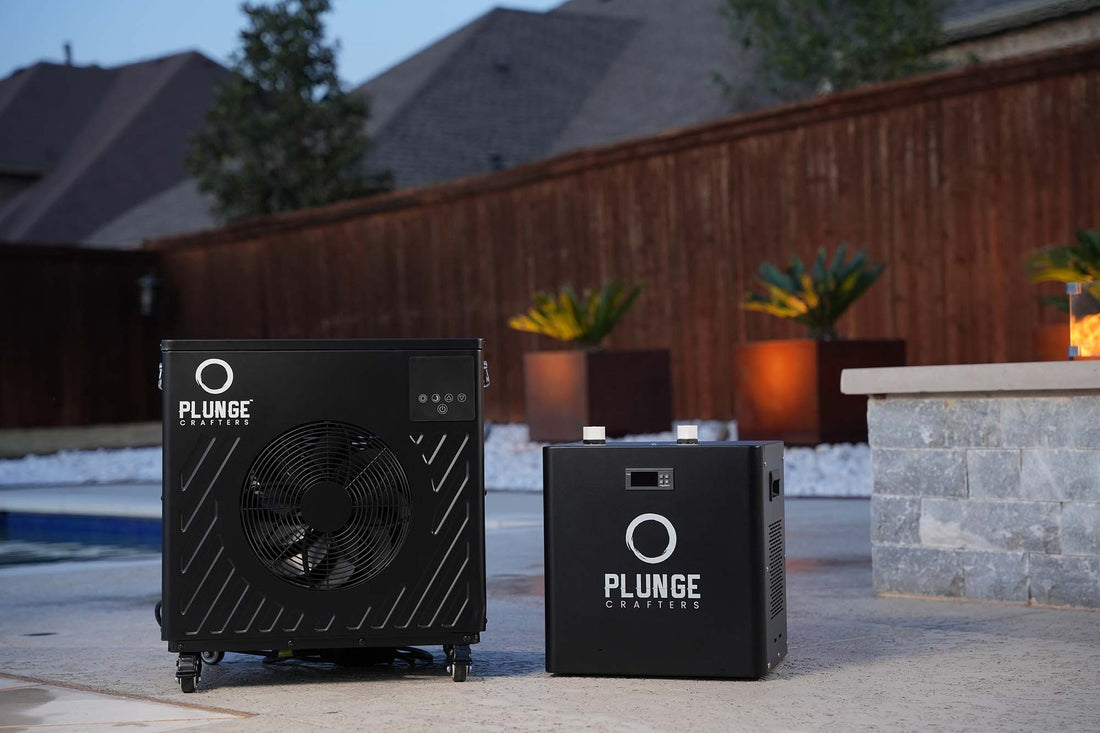Choosing the Right Water Chiller for Your Cold Plunge

Cold plunge therapy has surged in popularity, with athletes, biohackers and wellness enthusiasts swearing by its benefits. From muscle recovery to improved circulation and mental resilience, the right cold plunge setup is key to maximizing these advantages. But how do you keep your cold plunge at the perfect temperature? That’s where a high-quality cold plunge water chiller comes in.
Why a Water Chiller is Essential for Your Cold Plunge
Unlike ice baths, which require constant refilling and labor-intensive ice additions, a cold plunge chiller system maintains a consistent, controlled temperature. This ensures your cold water therapy remains effective, convenient and cost-efficient.
Key Benefits of a Water Chiller:
- Precise Temperature Control – Maintain your ideal cold plunge temperature (typically between 37°F-55°F) without fluctuation, ensuring maximum cold therapy benefits.
- Cost Efficiency – Save money on ice and water over time by eliminating the need for constant refills.
- Consistent Experience – No more guessing or adjusting; your cold plunge tub chiller keeps your plunge ready whenever you need it.
- Reduced Maintenance – Built-in filtration systems for cold plunge pools prevent bacteria and algae growth, reducing frequent water changes and upkeep.
Factors to Consider When Choosing a Cold Plunge Water Chiller
1. Cooling Power (BTU & Horsepower)
Cooling capacity is measured in BTUs (British Thermal Units) per hour or horsepower (HP). The right power level depends on:
- Plunge Size – Larger cold plunge tubs require more power. A small cold plunge may need a 1/4 HP chiller, while a large 150-gallon cold plunge tub might require 1/2 HP or more.
- Climate – If you live in a hot environment, a cold plunge ice bath chiller with more cooling power is necessary. Ambient temps play a big role in how well your chiller works. The warmer the environment the harder the chiller has to work.
- Desired Temperature – Lower water temperatures require high-performance cold plunge chillers to sustain colder therapy levels.
Common Recommendations:
- Small Cold Plunges (50-100 gallons): 1/4 HP (~3,000 BTU) – Best for personal use and indoor cold plunge setups.
- Medium Cold Plunges (100-200 gallons): 1/2 HP - 1 HP (~6,000 BTU) – Ideal for most home cold plunge users.
- Large Cold Plunges (200+ gallons): 1 HP+ (~12,000 BTU) – Necessary for commercial cold plunges or extreme cold therapy enthusiasts.
2. Energy Efficiency
A cold plunge refrigeration unit runs frequently, so energy efficiency matters. Look for:
- Eco-friendly refrigerants – Reduce environmental impact while maintaining cooling performance.
- Insulated plumbing and tubing – Prevents cooling loss and ensures efficient cold plunge chiller performance.
3. Filtration and Water Quality
Water chillers can circulate water, but some chillers don’t come with a water pumps and cold plunge filtration systems. A proper cold plunge filter and cold plunge ozone generator prevents bacteria, algae, and debris buildup. Consider:
- Inline filtration systems – Remove contaminants and keep water clear.
- Ozone generators – Kill bacteria, viruses, and algae for cleaner water.
- Venturi injectors – Enhance ozone efficiency in cold plunge sanitation.
- Cold plunge filters – Maintain water clarity and purity for a better ice bath chiller experience.
4. Noise Levels
Some water chillers for cold plunge tanks operate loudly. If noise is a concern:
- Opt for cold plunge water coolers with sound-dampening technology.
- Choose low-noise chiller units for indoor or residential settings.
How to Set Up a Water Chiller for Your DIY Cold Plunge
Building a DIY cold plunge? Installing a water chiller correctly is crucial for achieving optimal performance.
Step 1: Choose Your Cold Plunge Tub
- Stock tanks – Affordable and easy to modify.
- Insulated tubs – Help maintain temperature with less strain on your cold plunge cooling system.
Step 2: Connect the Water Chiller
- Use flexible PVC tubing to connect your cold plunge chiller unit.
- Integrate a venturi injector if using an ozone generator for water purification.
Step 3: Optimize Water Filtration
- Add a cold plunge water filtration system to remove debris and maintain clarity.
- Consider a UV sanitation system for extra purification.
Step 4: Maintain Your System
- Clean filters regularly.
- Check hoses and fittings for leaks.
- Inspect your cold plunge refrigeration chiller for optimal function.
For a full step-by-step guide, visit our DIY Cold Plunge Stock Tank - Chiller Plumbing Build Guide.
Choosing the Best Cold Plunge Chiller
Investing in a high-quality cold plunge chiller ensures effortless cold therapy, consistent water temperatures and long-term savings. By considering cooling power, efficiency, filtration and noise levels, you’ll find the perfect chiller for your cold plunge setup.
Are you ready to take your cold therapy to the next level? Browse our selection of top-rated cold plunge chillers and find the perfect solution for your needs today!

